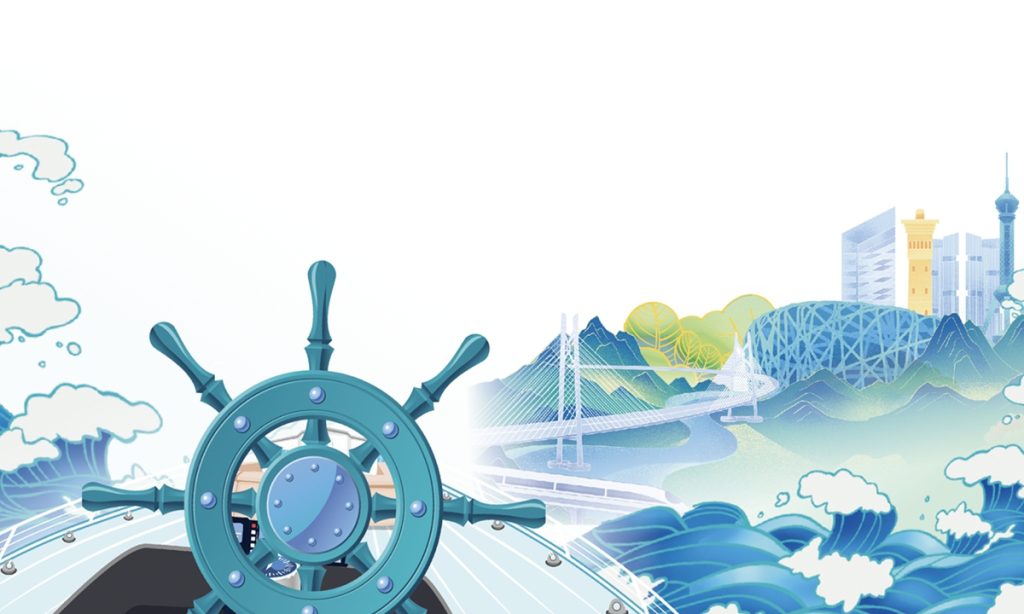Community of shared future strives for genuine justice for all

Editor's Note:
China's State Council Information Office issued an informative white paper, entitled "A Global Community of Shared Future: China's Proposals and Actions," to review and preview the China-led vision of co-building a global community of shared future on Tuesday in Beijing. Humanity is yet again at another crossroads in history, and the choices between unity and division, between opening up and closing off, as well as between cooperation and confrontation test the wisdom of all countries, the white paper said. How should we understand the global community of shared future? How should countries around the world work together to promote the construction of the global community of shared future? Global Times invited two foreign scholars to share their views on this issue.
A world of global cooperation, security, prosperity and dialogue among civilizations is being realized right before our eyes today. 10 years ago, China's vision for international relations and the globe were just words expressed as a community of shared future for mankind, or in today's terms, a global community of shared future. In the blink of an eye, this dream has bloomed before our eyes.
Multipolar and multilateral global partnerships and organizations such as BRICS and the Group of 77 with its 135 coalition partners, the Shanghai Cooperation Organisation and the ASEAN are actively creating a new world order based on the harmony of all nations, campaigning for world peace and building economic foundations for global prosperity.
China has used its national power as a top economic engine of the world economy and a major power in geopolitics to create the conditions for the emergence of this dynamic new world. In this world, the nations of the Global South can realize their potential with economic and infrastructure development support from institutions such as the Asian Infrastructure Investment Bank (AIIB), the New Development Bank and other development-oriented financial institutions.
It is important to acknowledge the central role of the China-proposed multi-trillion dollar Belt and Road Initiative (BRI) in creating interconnected networks of infrastructure, transportation, and trade corridors. These networks enable developing economies to connect to markets and stimulate economic growth and socio-political progress, as we can observe in Africa today.
These efforts toward the creation of a global community of shared future are liberating the Global South from centuries of enforced under-development by colonialism, neocolonialism and the latest of the evils, the Cold War modality and mentality which is coming to an end. In every part of the globe these "forever wars" of the West are being rejected in favor of "forever peace" of a global community of shared future.
Building up from Asia to the Middle East, Africa and Latin America, the spirit of the community of shared future is generating the hope and optimism that mankind can and is taking control of its fate and shaping the future toward the mission of forever peace and economic-technological development. The recent South Africa-China space exploration agreement attests to this, as well as the China-brokered Iran-Saudi Arabia peace deal.
I am always reminded of one of the most famous Western Christian Christmas carols, "Peace on Earth, Goodwill to Men." Unfortunately, the West has used this theme song as a means to deceive the colonialized nations while they used their power to exploit and plunder the impoverished. The advancement of the community of shared future is to end this exploitation and strive for genuine justice for all.
With 500 years of colonization and its "forever wars" in the past, we can now look forward to 500 years of "forever peace" in the global community of shared future. Imagine what the world can achieve even in the first 50 years of those 500 years of peace. Today, trade among BRICS has produced about 31 percent of Global GDP, with the six new members it will reach 37 percent, its population base would constitute 47percent of the world.
ASEAN is an early component of the community of shared future, its trade with China has increased from $641.5 billion in 2019 to $975.3 billion in 2022 due to the peace and stability of the region from cooperation of the two sides and resistance to interventions of disruptive forces from the West. The West has not ceased in carrying out aggressive actions to disrupt the ASEAN region, violating its Zone of Peace, Freedom and Neutrality (ZOPFAN) and Treaty of Southeast Asia Nuclear Weapon-Free Zone (SEANWFZ Treaty).
The West is pushing its NATO forces into Asia and proposing a Tokyo headquarters. The US has regained its neo-colonial foothold in the Philippines, bringing in new military bases, personnel, war planes and warships while the country suffers from fertilizer, rice and fuel shortages. Additionally, the US is creating lawfare and concocted media-focused crises between China and the Philippines.
ASEAN is politely quiet about the Philippines' alignment with the US' "forever war" campaign. Many in the region believe that the US's influence will decline due to its declining polity and economy, but it still creates an unsettling disturbance.
Despite this irritant, China continues its patient and transcendent cultivation of peaceful dialogue with the Philippines for the sake of the greater cause of the community of shared future.
The China-initiated global community of shared future backed by its resources and determination has given hope for a better future for humanity. Another 10 years of the project for the global community of shared future will see Africa, Latin America, the Eurasian continent and ASEAN blooming with wealth, technological advancement and collective cooperative projects.